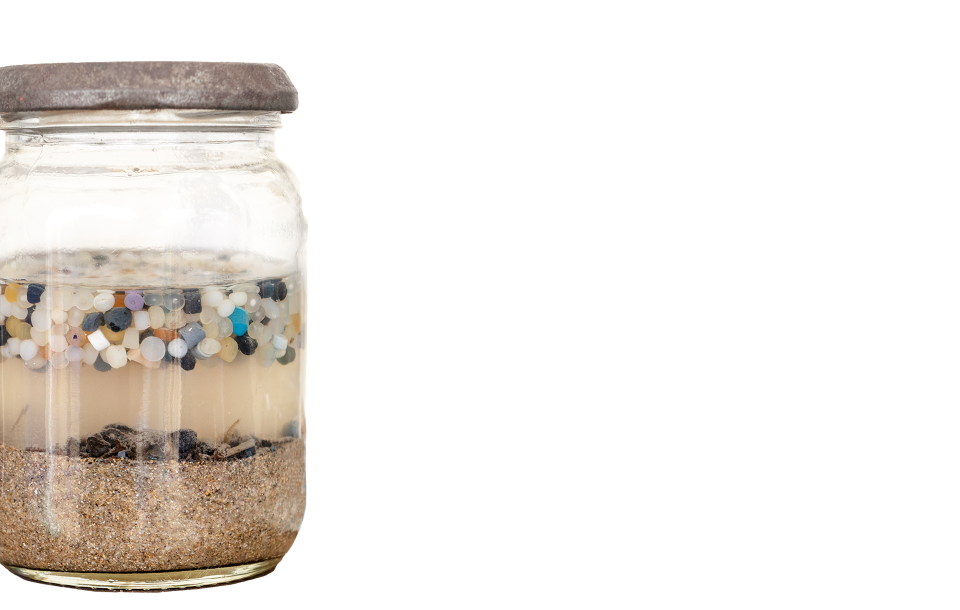Researchers have long expressed doubts that sewage treatment plants can extract microplastics from wastewater, but according to recent research, those doubts may be misplaced. To monitor and control entry paths, effective detection of microplastics is required, along with an understanding of their occurrence and fate in sewage treatment plants. How this can be achieved has been successfully documented in the RUSEKU joint project led by the German Federal Institute for Materials Research and Testing (BAM) based on monitoring of a representative sewage system with treatment plants in the German city of Kaiserslautern.
The project: Due to a lack of harmonized procedures for sampling, sample preparation and microplastics detection, Altman et al. chose to pursue the identification of microplastic pathways within a typical, representative European urban wastewater system.
The challenge: The microscale spectroscopic (microscopy) methods commonly used for microplastics analysis (μ-FTIR and or μ-Raman spectroscopy) provide detailed information about microplastics such as the number of particles and their size - information that is essential for an ecotoxicological assessment. Regulatory methods, however, also require knowledge about the polymer amount, i.e. mass present in the samples taken.
The solution: Altman et al. chose Thermal Extraction and Desorption-GC/MS (TED-GC/MS) for their project. This technique enables quick, rugged, and relatively simple determination of the types and respective mass content of polymer residues contained in real environmental samples. TED-GC/MS combines the large sample volume of thermogravimetric analysis with very low limits of quantification of GC-MS to determine both polymer type and quantity (concentration) in representative sample amounts. And TED-GC/MS combines thermal analysis and GC-MS to provide the added value of being able to detect styrene-butadiene rubber (SBR), the most widely found polymer in the environment associated with tire abrasion. Using TED-GC/MS, both microplastics and nanoplastics can be determined.
Sampling: Altmann et al. took samples at different locations using fractional filtration through filters with different mesh sizes (5, 50, 100 and 500 µm). Gray water, mixed water as well as the influent and effluent of both a municipal wastewater treatment plant (WWTP) and a sewage treatment plant were sampled and analyzed.
The analysis system: The TED-GC/MS used consists of a TGA 2 (Mettler Toledo GmbH) fitted with a dedicated heated interface and a Thermal Desorption Unit (GERSTEL TDU 2) in which pyrolysis breakdown products are collected on a sorbent. Adjacent to the TGA 2, a 7890 GC with 5977B MSD (Agilent Technologies) is placed fitted with a second TDU 2 for thermal desorption and a MultiPurpose Sampler (GERSTEL MPS) for automated determination of polymer decomposition products. This combined system enables the identification and mass determination of microplastics in the presence of naturally occurring particles in water and in environmental samples. Multi-deuterated polystyrene (m/z=96) was used as internal standard.
Analysis details: Pyrolysis decomposition products formed at temperatures up to 600 °C in the TGA 2 were collected and concentrated on a pre-conditioned sorbent (PDMS). The sorbent was subsequently transferred to the analytical TDU 2 for thermal desorption and GC-MS determination of the collected analytes. The released analytes were cryofocused in the GC inlet (GERSTEL Cooled Injection System, CIS 4) and transferred to the GC column (HP5-MS, 30m x 0.25 mm, 0.25 µm, Agilent Technologies) by programmed temperature vaporization (PTV). The analysis system accepts large, representative sample amounts without overloading the GC column and contaminating the system.
The result: The highest polymer amounts by far were found in the gray and mixed water as well as in the influent to the sewage treatment plant. Three polymers were predominant: Polyethylene (PE), polypropylene (PP) and polystyrene (PS). In addition, other polymer types such as styrene-butadiene rubber (SBR) were found in the influent to the sewage treatment plant. Results are listed below (mg information refers to 1000 L):
- Gray water: 32.0 to 243.1 mg (PE), 2.1 to 6.2 mg (PP), 0.1 to 0.3 mg (PS)
- Mixed water: 0.6 to 992.2 mg (PE), 0.8 to 75.7 mg (PP), 0.3 to 46.7 (PS)
- Feed (influent): 5.7 to 114.9 mg (PE), 1.5 to 11.7 mg (PP), 0.2 to 15.6 (PS) and 1.8 to 18.0 mg (SBR)
In the wastewater treatment plant effluent, Altmann et al. determined the following amounts:
- Outlet: 2.7 to 11.8 mg (PE), 0.2 to 1.6 mg (PP), 0.1 to 0.2 mg (PS), and 0.1 to 0.3 mg (SBR).
A comparison of all the examined samples revealed that “despite the universal dominance of PE, the samples exhibit a high degree of variance.” According to Altmann et al., PE, PP and PS particles were found at all sampling points, but not in all filter fractions and not in similar amounts. Temporal or seasonal trends could not be derived, the researchers conclude. None of the samples were found to contain polyethylene terephthalate (PET) or polyamide (PA), polymers used on a large scale in textiles. This observation certainly requires more detailed investigation, but it does seem to indicate that modern residential washing machines release less microplastics than is generally assumed.
Further details and conclusions can be found in the original journal article by Altmann et al.: https://onlinelibrary.wiley.com/doi/10.1002/appl.202200078
